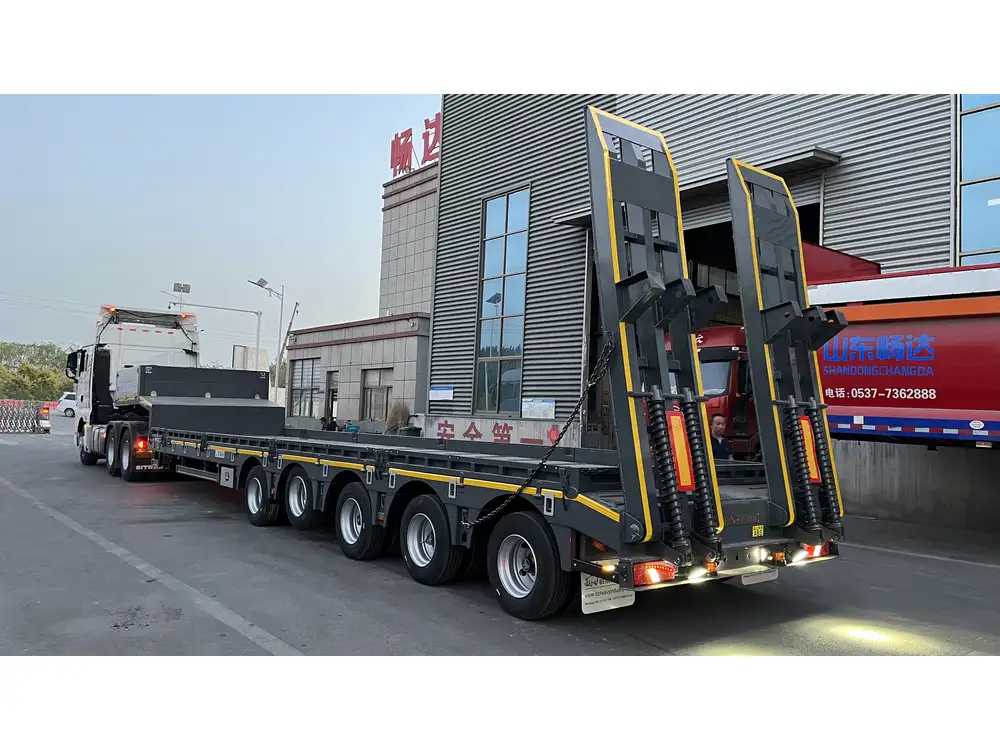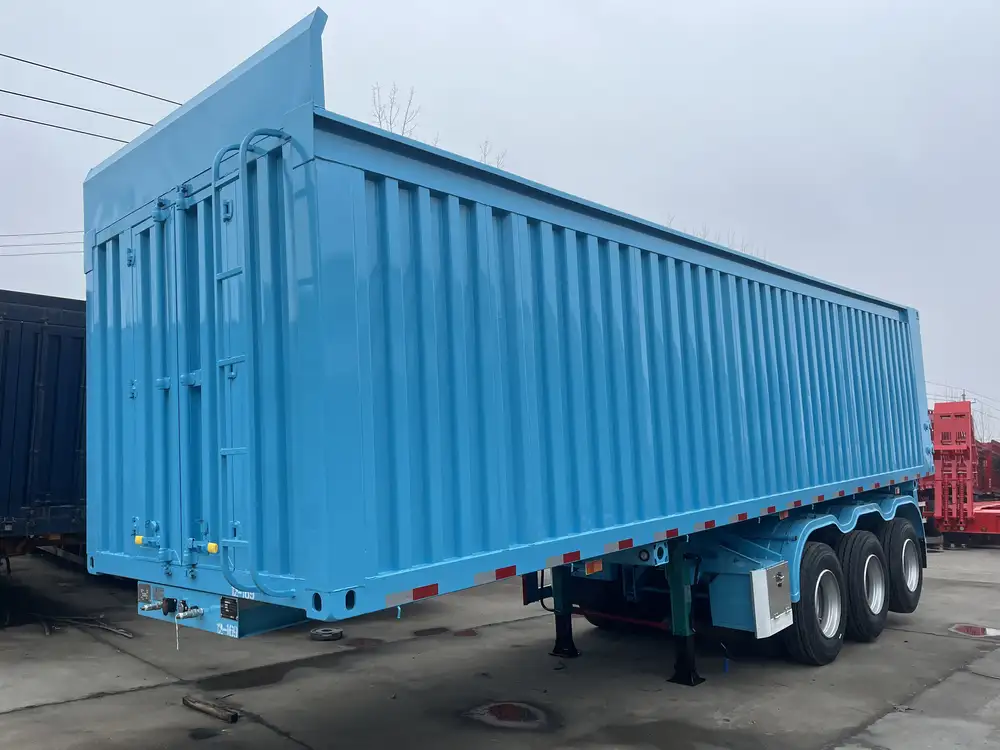Understanding the terminology of the trucking and logistics industry can sometimes seem like deciphering an ancient code. One term that often causes confusion is “semi-trailer.”
Definition: What Exactly is a Tractor Trailer?
A tractor trailer refers to a combination vehicle type, where a tractor, or towing vehicle, is connected to a semi-trailer or cargo container. This configuration is pivotal in freight transportation, allowing for the efficient movement of goods over vast distances. The towing vehicle is designed to pull the weight of the trailer, which typically contains the cargo.
The Terminology Breakdown: “Tractor”, “Trailer”, and “Semi”
Tractor: This is the powered vehicle that provides the necessary force to pull the trailer. It houses the engine, driver’s cab, and crucial elements for vehicle operation.
Trailer: This is a non-motorized component that is attached to the tractor. It is designed to carry cargo but doesn’t have its own power source.
Semi: The term “semi” comes from “semi-trailer,” which signifies that the trailer is not a full trailer in the sense that it relies partially on the tractor for support. The semi-trailer extends over the rear of the truck, making it a unique design in the trucking industry.

Why Call it a Semi?
The answer lies in the design and structural composition of the trailer. Unlike a full trailer that can stand alone with wheels at both the front and back, a semi-trailer has its wheels only at the rear. Thus, it is “semi-supported” by the tractor during transit. This allows for greater flexibility and can help improve maneuverability, particularly in tight spaces.
The Evolution of the Semi-Trailer
Historical Context
The term “semi-trailer” has deep historical roots dating back to the 19th century. As commerce and transportation evolved from horse-drawn carriages to mechanized trucks, so did the need for efficient freight hauling solutions.
Early Beginnings: The inception of the semi-trailer can be traced to the horse-drawn wagons, which were remarkably similar in design to today’s tractor-trailer combinations.
Mechanization: By the early 20th century, the introduction of powered vehicles revolutionized this arrangement, giving rise to motorized tractors and semi-trailers that became synonymous with long-haul trucking.

The Advantages of Semi-Trailers
- Load Flexibility: Semi-trailers can accommodate a variety of cargo types, from bulk goods to specialized freight.
- Easy Attachment & Detachment: The design allows for faster transfer times than traditional full trailers, aiding operational efficiency.
- Enhanced Stability: The semi design contributes to better weight distribution, crucial for safe handling on highways.
Performance Metrics: How Semi-Trailers Are Used in the Industry
Comparison of Trailer Types
| Trailer Type | Definition | Advantages | Common Uses |
|---|---|---|---|
| Full Trailer | Both front and rear axles | Greater stability | Heavy loads, minimal maneuverability |
| Semi-Trailer | Only rear axles; supported by tractor | Flexible and versatile; easier to maneuver | General freight, long hauls |
| Flatbed Trailer | Open platform for loading goods | Easy loading/unloading; versatile | Construction materials, machinery |

Various Applications
Semi-trailers serve an extensive range of applications, including:
Refrigerated Transport: Used for perishables, these semi-trailers maintain controlled temperatures to ensure freshness.
Tank Trailers: Utilized for transporting liquids, tank trailers have special design elements to secure loads during transit.
Drop Deck Trailers: These types lower the load height, allowing for the transportation of taller cargo.
Load Capacities
The load capacity of a semi-trailer can vary widely based on design and regulations. Most commonly, a standard semi-trailer can carry:
- Typical Dry Van: 26,000 to 30,000 pounds
- Reefer Trailers: Similar capacity but often demands higher fuel efficiency due to refrigeration systems.
- Flatbed Trailers: While versatile, their capacity can stretch up to 48,000 pounds depending on axle configurations and cargo type.
Understanding Regulations and Compliance
To operate effectively, semi-trailers must adhere to various regulations enforced at both state and federal levels.

DOT Regulations
The U.S. Department of Transportation (DOT) sets guidelines that dictate maximum weight limits, safety standards, and certification requirements for both tractors and trailers.
Safety Considerations
Braking Systems: The semi-trailer’s braking system must be compatible with the tractor to ensure safe stopping distances.
Securing Loads: Proper cargo securement techniques are vital to prevent accidents and damages during transit.
Innovations in Semi-Trailer Technology

Advancements in Design
Recent innovations have transformed semi-trailers, enhancing their fuel efficiency and overall performance.
Aerodynamics: The introduction of aerodynamic designs helps reduce drag, leading to improved fuel consumption and reduced carbon footprint.
Telematics: Smart technologies allowing for real-time tracking and monitoring of load conditions and vehicle status have become prevalent.
Future Trends
Sustainability Initiatives: Many manufacturers are exploring eco-friendly materials and electrification of trailers.
Automation: Pushes towards driverless trucks may soon lead to the evolution of semi-trailer design and functionality.
Common Misconceptions About Semi-Trailers

Clarifying Confusion
Many people often conflate terms within the trucking industry. Here are some common misconceptions, along with clarifications:
Are all trailers “semi”?
- No, only trailers without front axles that rely on a tractor for support are considered semi-trailers.
Is a semi-trailer considered a full truck?
- A semi-trailer is not a full truck by itself; it requires a tractor to be functional.
Do all semi-trailers pull the same weight?
- Weight limits can vary widely based on state laws, trailer type, and cargo specifics.
Conclusion: The Importance of Understanding “Semi”
In summary, the term “semi” in tractor-trailer nomenclature is more than just a term; it embodies a unique design philosophy that has been refined over centuries. Understanding the intricacies of semi-trailers—ranging from their historical evolution to modern technological innovations—offers insights into their vital role in transporting goods efficiently.
As we traverse through logistics and freight transportation, grasping the significance of terminology deepens our appreciation for the mechanical marvels that power our economy. Whether you’re in the trucking business or just an interested observer, knowing why a tractor trailer is called a semi is a gateway to a larger world of transportation complexities.
In the end, the optimized function and multifaceted nature of semi-trailers illustrate not just a mode of transport, but also a vital component in the intricate weave of global commerce. Embracing this knowledge can pave the way for better operational practices, informed decision-making, and greater respect for those who move our world, one haul at a time.



